
Hypoxic and anoxic regions in the Baltic Sea, 2013
The content of this webpage is part of the Marine Science Report No 100 2016 and should be cited as:
Susanne Feistel, Rainer Feistel, Dietwart Nehring, Wolfgang Matthäus, Günther Nausch, Michael Naumann: Hypoxic and anoxic regions in the Baltic Sea, 1969 - 2015. Meereswiss. Ber., Warnemünde, 100 (2016) doi: 10.12754/msr-2016-0100
All version information and information on further technical development are available via the website https://www.io-warnemuende.de/msr-2016-0100.html

This work is licensed under a Creative Commons Attribution-NonCommercial 4.0 International License.
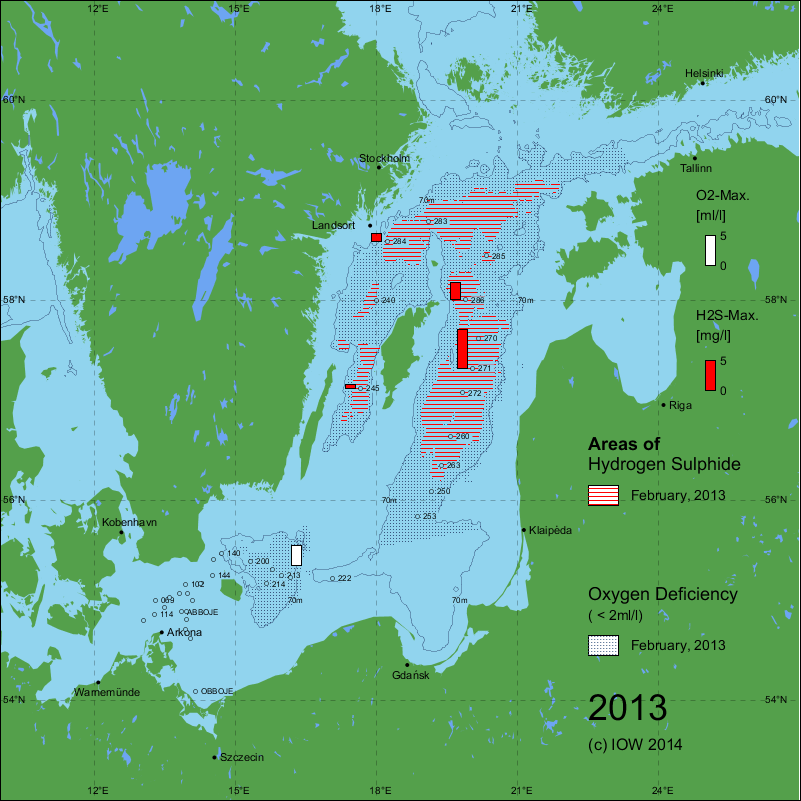
Jan/Feb, 2013: download SVG (computed 2016)
|
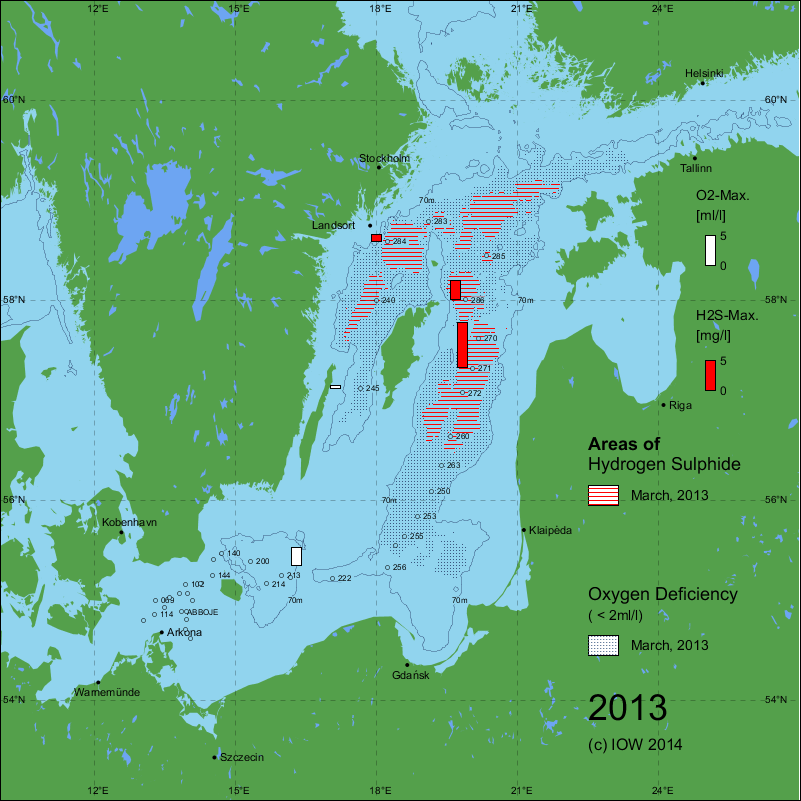
Mar/Apr, 2013: download SVG (computed 2016)
|
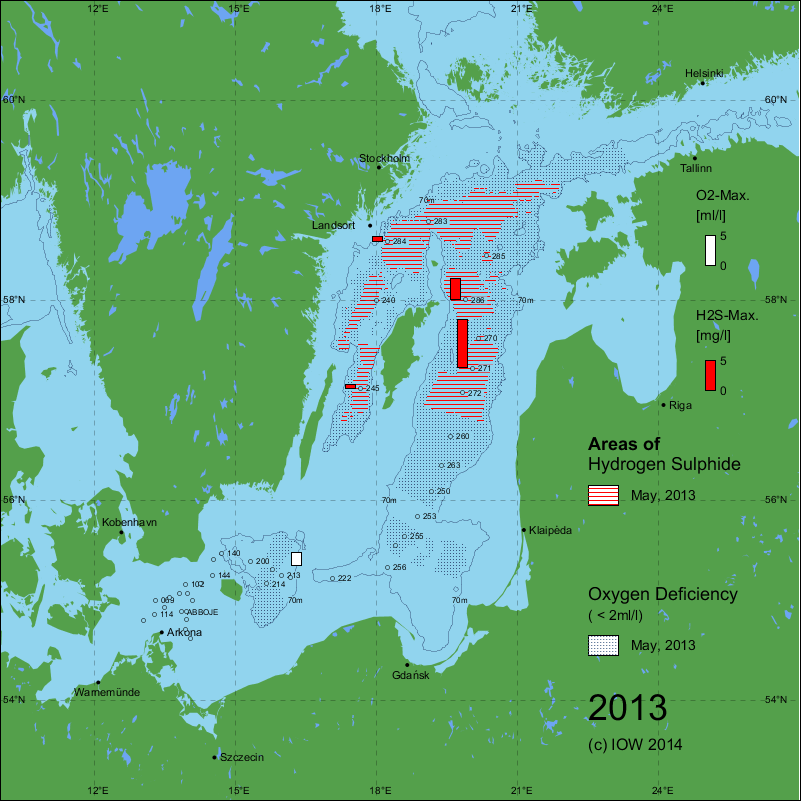
Apr/May, 2013: download SVG (computed 2016)
|
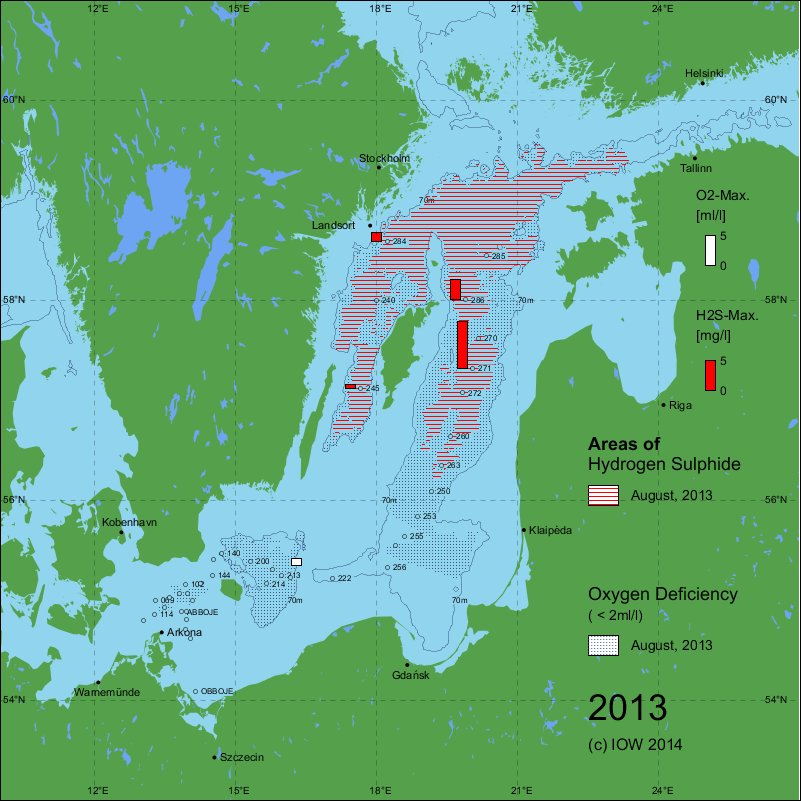
Jul/Aug, 2013: download SVG (computed 2016)
|
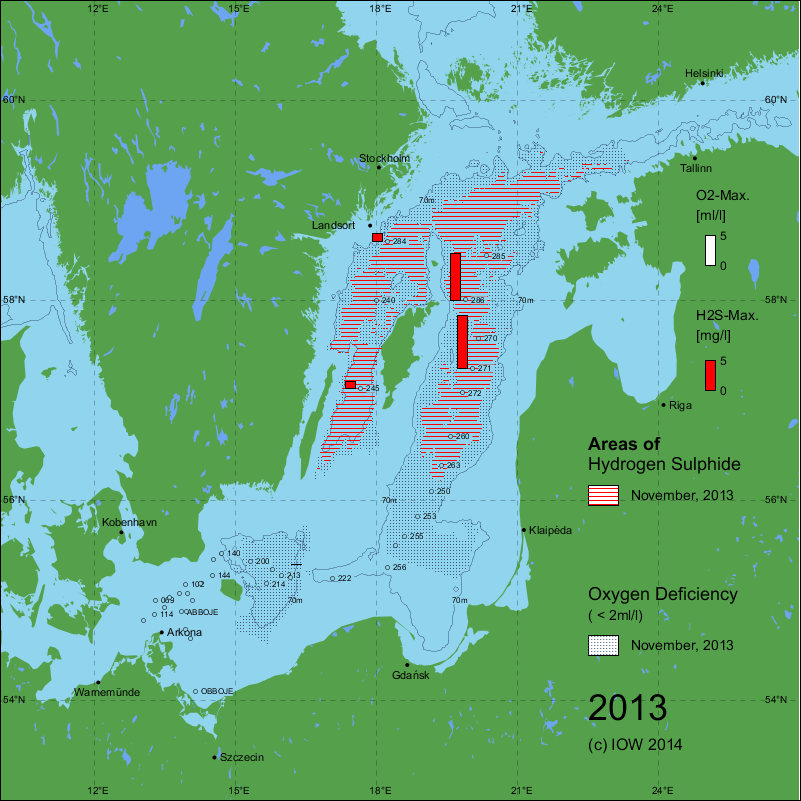
Oct/Nov, 2013: download SVG (computed 2016)
|
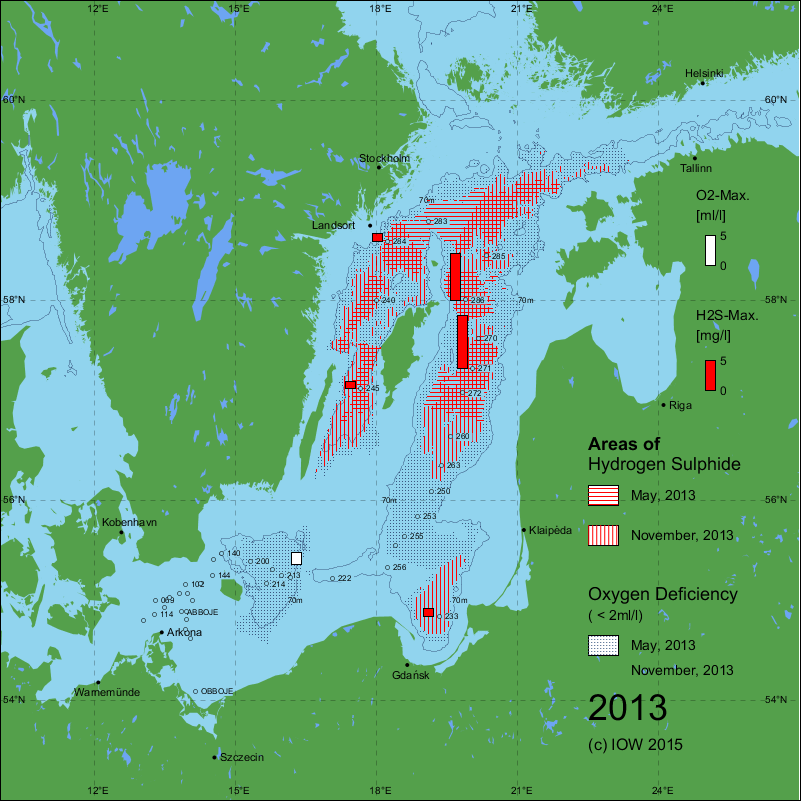
Apr/May & Oct/Nov, 2013: download SVG (computed 2016)
|
| Inflows are frequently able to ventilate the deep water in the Bornholm Basin. Thus, the basin contains oxygen in the depth since 2006. However, the intensity of four observed inflow events was, as in the years before, not strong enough to reach the central Baltic Sea. Salinity and temperature decreased further, with only small variations throughout the year. In the Gotland Deep, highest H2S concentration (-5.30 ml/l), was measured during the present stagnation period lasting since 2005 (cf. Fig. 3) (NAUSCH et al., 2014). | |
References:
- NAUSCH, G., NAUMANN, M., UMLAUF, L., MOHRHOLZ, V., SIEGEL, H., 2014: Hydrographisch-hydrochemische Zustandseinschätzung der Ostsee 2013. – Meereswiss. Ber., Warnemünde, 93, 1-104, doi: 10.12754/msr-2014-0093